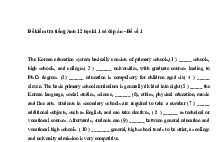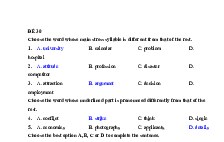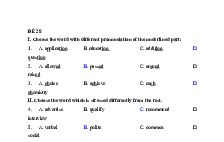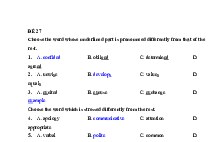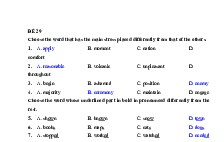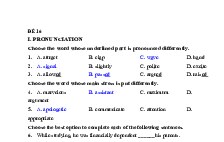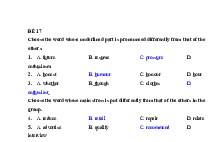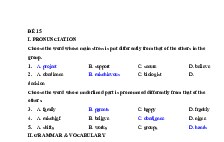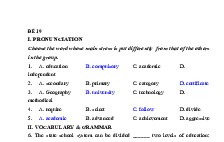Đề khảo sát chất lượng Tiếng Anh 12
Nội dung tài liệu
Tải xuốngCác tài liệu liên quan
-
![Đề thi học kì 1 Tiếng anh lớp 12 năm 2020-2021 ĐỀ SỐ 2]()
-
![Đề thi học kì 1 Tiếng anh lớp 12 năm 2020-2021 ĐỀ SỐ 1]()
-
![Đề thi học kì 1 Tiếng anh lớp 12 năm 2020-2021 ĐỀ SỐ 30]()
-
![Đề thi học kì 1 Tiếng anh lớp 12 năm 2020-2021 ĐỀ SỐ 28]()
-
![Đề thi học kì 1 Tiếng anh lớp 12 năm 2020-2021 ĐỀ SỐ 27]()
-
![Đề thi học kì 1 Tiếng anh lớp 12 năm 2020-2021 ĐỀ SỐ 29]()
-
![Đề thi học kì 1 Tiếng anh lớp 12 năm 2020-2021 ĐỀ SỐ 16]()
-
![Đề thi học kì 1 Tiếng anh lớp 12 năm 2020-2021 ĐỀ SỐ 17]()
-
![Đề thi học kì 1 Tiếng anh lớp 12 năm 2020-2021 ĐỀ SỐ 15]()
-
![Đề thi học kì 1 Tiếng anh lớp 12 năm 2020-2021 ĐỀ SỐ 14]()
Có thể bạn quan tâm
Thông tin tài liệu
| BỘ GIÁO DỤC VÀ ĐÀO TẠO | KỲ THI TỐT NGHIỆP TRUNG HỌC PHỔ THÔNG NĂM 2022 |
|---|---|
ĐỀ THI CHÍNH THỨC (Đề thi có 04 trang) |
Bài thi: NGOẠI NGỮ ; Môn thi: TIẾNG ANH Thời gian làm bài: 60 phút, không kể thời gian phát đề Fdjjsjskkjjhxhujjxjjmjjsjjjskkjssss |
Họ tên thí sinh: .....................................
Số báo danh: .........................................
Mark the letter A, B, C or D on your answer other three in pronunciation in each of the following questions.
Question 1. A. boot B. foot C. full D. look
Question 2. A. climbed B. failed C. laughed D. saved
Mark the letter A, B, C or D on your answer sheet to indicate the word that differs from the other three in the position of primary stress in each of the following questions.
Question 3. A. antique B. brilliant C. casual D. humid
Question 4. A. career B. neighborhood C. opinion D. hotel
Mark the letter A, B, C or D on your answer sheet to indicate the correct answer to each of the following questions.
Question 5. Look! _____ police are coming to arrest the criminal. We are saved!
A. a B. the C. Ø D. an
Question 6. May told me to be at the railway station at 7 A.M the next day. The train ______ at 8 A.M and I’m not going to be late like the last time.
A. is leaving B. leaves C. was leaving D. will be leaving
Question 7. The more you practice figure skating, _____ you will be.
A. the less better B. the more good C. the better D. the more than
Question 8. He couldn’t ride his bike _____ there’s no air in one of the tyres.
A. since B. due to C. though D. despite
Question 9. Deaf people cannot hear. So some of them have a person listen _____ the person who is talking then he or she will make hand signs back to the deaf one.
A. against B. from C. with D. to
Question 10. ______, Joe was annoyed to find that he had left his key at the coffee shop.
A. After returned to his office B. To have just returned to his office
C. Upon returning to his office D. Having been returned to his office
Question 11. When ______ the 2018 Oscar for the best Actor in a Supporting Role, Sam Rockwell thanked his mom and dad for inspiring him with the love for movies.
A. was awarded B. having awarded C. awarding D. awarded
Question 12. Please accept my apology. I didn’t mean ______ your birthday party last night.
A. to be missed B. to have missed C. having missed D. being missed
Question 13. The whale shark has long been considered a(n) ______ species as its natural habitat is seriously damaged owing to marine pollution.
A. endangered B. endanger C. danger D. dangerous
Question 14. As the old accountancy has retired, the _____ news has been announced this morning.
A. recruitment B. hiring C. contracting D. trading
Question 15. You shouldn’t work all the time. It ______ you good to go out and enjoy yourself sometimes.
A. gives B. does C. helps D. brings
Question 16. If need be, we will find someone who is _______ on database.
A. a distributor B. an authority C. a main D. a specialist
Question 17. That topic is a divisive one. Whoever plays the ______’s advocate will face a lot of negative comments.
A. opposite B. other side C. downside D. devil
Question 18. I’m so excited about next week. I’m going to _____ a fine _____.
A. hold/impression B. wear/look C. cut/figure D. be/queen
Mark the letter A, B, C or D on your answer sheet to indicate the most suitable response to complete each of the following exchanges.
Question 19. Alex is talking to his colleague, Tom, at tea break.
Alex: “Do you fancy a drink this evening?”
Tom: “________”
A. I’m afraid not. I can manage without you. B. Thank you. I’m glad you could go.
C. Some other time, perhaps. I’m busy tonight. D. Why not? Pleased to meet you, too.
Question 20. Two students are chatting in the corridor after class.
Tim: “We should make a slide show for our history presentation next week.”
Laura: “__________”
A. Sorry, I have to check my diary. B. That’s exactly what I was going to say.
C. I’d love to but I just can’t now. D. That’s true. I understand how you feel.
Mark the letter A, B, C or D on your answer sheet to indicate the word(s) CLOSEST in meaning to the underlined word(s) in each of the following questions.
Question 21. Using public transportation means not having to hunt for a parking space when you go downtown.
A. gain B. search C. discover D. purchase
Question 22. I intended to spend a romantic weekend in Bali but the weather forecast was appalling enough to disappoint me.
A. hold B. weaken
C. discourage D. interpret
Mark the letter A, B, C or D on your answer sheet to indicate the sentence that is closest in meaning to each of the following questions.
Question 23. All of the courses I have taken, this one is the hardest but most interesting.
A. All of the courses I have taken are easier than and as interesting as this one.
B. All of the courses I have taken are tougher and more fascinating than this.
C. No other course I have taken was harder nor less fascinating than this.
D. No other course I have taken was as tough nor as fascinating as this one.
Question 24. “Let’s give her more information about our plan next week,” said Michael.
A. Michael suggested giving her more information about their plan the following week.
B. Michael proposed that he would give her more information about their plan next week.
C. Michael blamed them for not giving her more information about their plan the following week.
D. Michael wanted to have permission to give her more information about next week’s plan.
Question 25. It was wrong of you to criticize her in front of her colleagues.
A. You are wrong about criticizing her in front of her colleagues.
B. You shouldn’t have criticized her in front of her colleagues.
C. You didn’t need to criticize her in the presence of her colleagues.
D. You must be mistaken about criticizing her with her colleagues.
Read the following passage and mark the letter A, B, C or D on your answer sheet to indicate the correct answer to each of the questions from 26 to 30.
Plants and animals will find it difficult to escape from or adjust to the effects of global warming. Scientists have already observed shifts in the lifecycles of many plants and animals, such as flowers blooming earlier and birds hatching earlier in the spring. Many species have begun shifting where they live or their annual migration patterns due to warmer temperatures.
With further warming, animals will tend to migrate toward the poles and up mountainsides toward higher elevations. Plants will also attempt to shift their ranges, seeking new areas as old habitats grow too warm. In many places, however, human development will prevent these shifts. Species that find cities or farmland blocking their way north or south may become extinct. Species living in unique ecosystems, such as those found in polar and mountaintop regions, are especially at risk because migration to new habitats is not possible. For example, polar bears and marine mammals in the Arctic are already threatened by dwindling sea ice but have nowhere farther north to go.
Ocean ecosystems, especially fragile ones like coral reefs, will also be affected by global warming. Warmer ocean temperatures can cause coral to “bleach”, a state which if prolonged will lead to the death of the coral. Scientists estimate that even 1 Celsius degree of additional warming could lead to widespread bleaching and death of coral reefs around the world. Also, increasing carbon dioxide in the atmosphere enters the ocean and increases the acidity of ocean waters. This acidification further stresses ocean ecosystems.
(Adapted from "Global Warming" by Michael Mastrandrea and Stephen H. Schneider)
Question 26: Scientists have observed that warmer temperatures in the spring cause flowers to ______.
A. die instantly B. bloom earlier C. become lighter D. lose color
Question 27: According to paragraph 2, when their habitats grow warmer, animals tend to move ______. A. south-eastwards and down mountainsides toward lower elevations
B. north-westwards and up mountainsides toward higher elevations
C. toward the North Pole and down mountainsides toward lower elevations
D. toward the poles and up mountainsides toward higher elevations
Question 28: The pronoun “those” in paragraph 2 refers to ______.
A. species B. ecosystems C. habitats D. areas
Question 29: The phrase “dwindling sea ice” in paragraph 2 refers to ______.
A. the frozen water in the Arctic
B. the violent Arctic Ocean
C. the melting ice in the Arctic
D. the cold ice in the Arctic
Question 30: What does the passage mainly discuss?
A. Influence of climate changes on human lifestyles
B. Effects of global warming on animals and plants
C. Global warming and possible solutions
D. Global warming and species migration
Read the following passage and mark the letter A, B, C or D on your answer sheet to indicate the correct word or phrase that best fits each of the numbered blanks from 31 to 35
HOW FASHION RULES THE WORLD
Nowadays, fashion is bold and daring, and this reflects a noughties generation that is not (31) _____ to say what they think, or wear what they want. Fashion is not just a (32) _____ of clothing your div, it is the essence of your personality and beliefs, and designers are well aware of the power they hold. Designers’ predictions and designs for the coming season are more hotly anticipated than any other revelation in the world. Trends in fashion unify women and men around the world, (33) _____ they still allow people the ability to portray their own individual style at the same time. A period of time portrayed in a picture can be identified immediately just by the style of clothes the people are wearing, and this sums up just how powerful and all-encompassing fashion is. Fashion can change from one second to the next, but what never changes is the hold it has over society, and the role it plays in the modern world. Fashion is so important (34) _____ whole magazines are dedicated to it, TV programs (35) _____ hours of transmission time to the subject, and people discuss it between their friends continually.
(Adapted from Fibre2Fashion.com)
Question 31: A. afraid B. deny C. kind D. vow Question 32: A. way B. means C. road D. bunch Question 33: A. despite B. notwithstanding C. yet D. for
Question 34: A. what B. which C. how D. that
Question 35: A. attract B. appeal C. devote D. like
Mark the letter A, B, C or D on your answer sheet to indicate the word(s) OPPOSITE in meaning to the underlined word(s) in each of the following questions.
Question 36. When my parents got married, they paid for their car by monthly installments over two years.
A. bank loan B. partial payment C. full payment D. consumer borrowing
Question 37. To become a good mixer, you need to know a lot of people and make new friends too.
A. an extrovert C. a person who is not good at meeting people
B. a friendly person D. a dynamic person
Mark the letter A, B, C or D on your answer sheet to indicate the sentence that best combines each pair of sentences in the following questions.
Question 38. They encouraged him a lot in the competition. He didn’t give up because of that.
A. Having encouraged considerably during the competition, he didn’t stop trying.
B. But for their great encouragement in the competition, he would have given up.
C. Their great encouragement made it impossible for him to be in great despair.
D. Provided that they have encouraged him, he couldn’t have thought of giving up.
Question 39. His wife gave birth to their first child. He understood what true responsibility meant.
A. Never has he understood true responsibility before he became a parent himself.
B. Were his first child not to be born, he wouldn’t understand true responsibility.
C. Hardly had he understood true responsibility when their first child was born.
D. Not until he became a parent did he understand what true responsibility meant.
Mark the letter A, B, C or D on your answer sheet to show the underlined part that needs correction in each of the following questions.
Question 40. Not only the author but also the editor are responsible for the content of a book.
A. but also B. are C. for D. of
Question 41. They aren’t allowed smoking in the house because of the bad smell.
A. aren’t B. smoking C. because of D. smell
Question 42. The Prime Minister is to consider changes to sexually discrimination laws to enforce equal opportunities
A. is B. to C. discrimination D. enforce
Read the following passage and mark the letter A, B, C or D on your answer sheet to indicate the correct answer to each of the questions from 43 to 50.
The Navajo Indians live in the northeastern part of the state of Arizona in the United States. The Navajos have very strong traditions from centuries ago. One of the traditions is sand painting.
There are rocks of many beautiful colors in this part of Arizona. A
Navajo sand painter finds rocks of several different colors. He grinds
each rock into sand. Then he is ready to make a sand painting.
He always makes the painting on the floor inside a small Navajo house.
He takes some colored sand in his hand and puts it on the floor in a
line. He changes to different colors and slowly makes a picture. Sand
paintings are very important to Navajos. Only a medicine man or a singer
can make them. He knows how because his father and grandfather taught
him.
The Navajos use sand paintings as part of their religion. They use them to help sick people. The singer always makes the picture exactly the same way. He does not make new pictures. He always makes the ones he learned from his father. Navajos believe that when the picture is finished, the person's sickness goes into the picture. Then the medicine man erases the picture from the floor. The picture and the sickness are gone.
Navajos always welcome new ideas. They got sheep, horses, cows, and cloth from the Spanish. They use the wool from their sheep to make fascinating rugs. In the 1880s they started using some of the pictures from sand paintings in their rugs. The pictures were similar to the traditional ones, but not exactly the same. The Indians always changed color or a line. They would not use their religious pictures without changing them a little.
In the 1930s the Navajos started making sand paintings to sell. They put the painting on a board with glue, and sold the beautiful pictures to tourists. However, the pictures were always a little different from their religious pictures.
Most Navajo Indians are poor. They raise sheep, but farming is difficult because the land is very dry. They have no factories, and it is not easy to find a job. They can earn a lot of money by selling their sand paintings. They still use sand paintings for their religion. However, the medicine man or singer never makes paintings to sell. Business and religion are always separate. Some Navajos think that they should not sell sand paintings because they are part of their religion. Others think that it is a good way to earn money, and they do not have many ways to earn money. People in other countries have similar problems. They do not like to use their belief and traditions to earn money, but sometimes it is necessary.
(Adapted from Concepts and Comments by Patricia Ackert)
Question 43: Which is the most suitable title for the text?
A. An art of painting in the Navajo religion.
B. A significant culture of an ancient tribe.
C. An overview of research on the Navajos.
D. Navajos and their strong traditions of art.
Question 44: The word fascinating in paragraph 4 is closest in meaning with ______.
A. beautiful B. amicable C. brutal D. inflatable
Question 45: According to paragraph 2, to make the sand used in the painting, what will the painter do?
A. He will find a colorful rock and grind it into sand.
B. He will pick a rock out of those with different colors and make it into colorful sand.
C. He will go to the beach, get some sand and get ready for the painting.
D. He will mince a rock on the beach into sand.
Question 46: The word they in paragraph 6 refers to _____.
A. rugs B. religions C. paintings D. The Navajos
Question 47: The word exactly in paragraph 3 refers to _____.
A. similarly B. vividly C. evenly D. completely
Question 48: Why most of the Navajos are poor?
A. Because they were born poor.
B. Because they do not have any factories and it is not easy to find a job.
C. Because most of them do the hunting but the land is too dry for plants and animals.
D. Because most of them are conservative about selling products referring to their religion.
Question 49: Which of the following statements are NOT TRUE according to the text?
A. The Navajo sand painter make the sand used in the painting from rocks
B. The Navajos sell the sand painting to earn money in the 1930s
C. Sand paintings are used in curing a sick person by making a picture of sand then wipe it away and the illness will go immediately.
D. Knowledge about sand paintings is only passed down to the medicine or singer families.
Question 50: Which of the following can be inferred from the text?
A. The Navajos conserve their tradition very well and some even use their traditional art for earning a living.
B. The sand pictures which are sold to tourists always have some significant features that distinguish themselves from the original.
C. Some Navajos object to using their religion to make money, they only do that when necessary.
D. The Navajos always welcome new ideas because they have used materials from other countries to make rugs and even use their primitive picture in it to make those fascinating rugs.



